Lexar PLAY 2280 4TB Performance Testing
We test using both the default smaller test size and larger test sets on our benchmarks. This allows us to see the difference between lighter and heavier workloads.
CrystalDiskMark x64
CrystalDiskMark is used as a basic starting point for benchmarks as it is something commonly run by end-users as a sanity check.
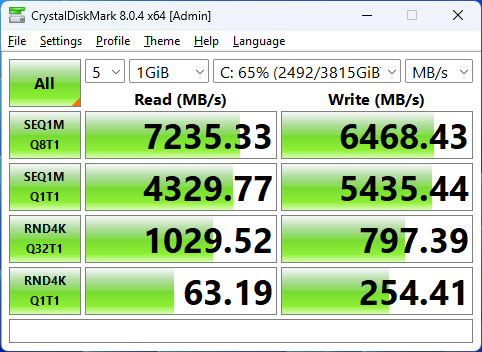
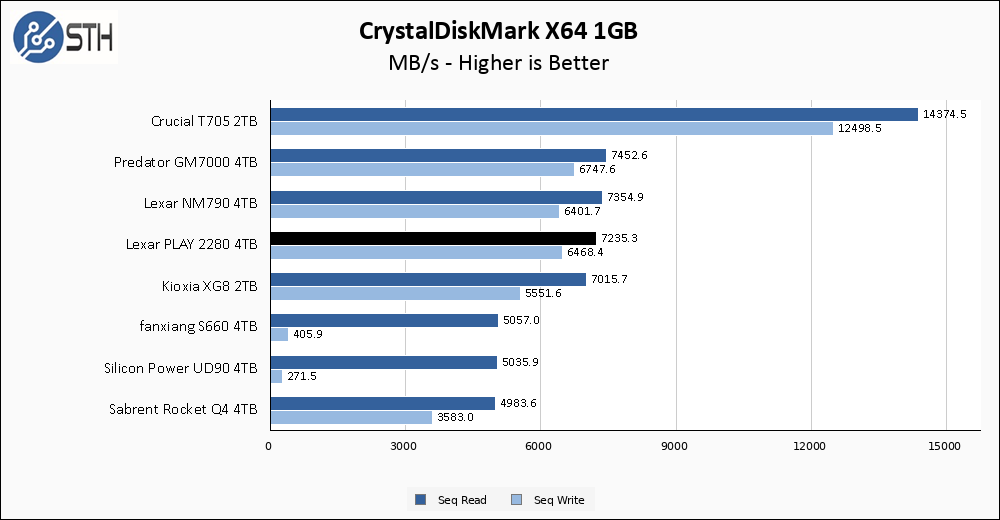
The Lexar PLAY 2280 4TB made some lofty claims for its sequential performance, and it gets most of the way there to hitting them. Read performance comes up ever so slightly short of the claimed 7400 MB/s, while write performance gets within a margin of error of the rated 6500 MB/s. As expected, the performance is pretty similar to the NM790 as well.
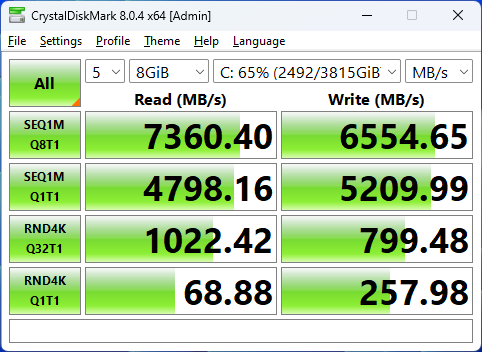
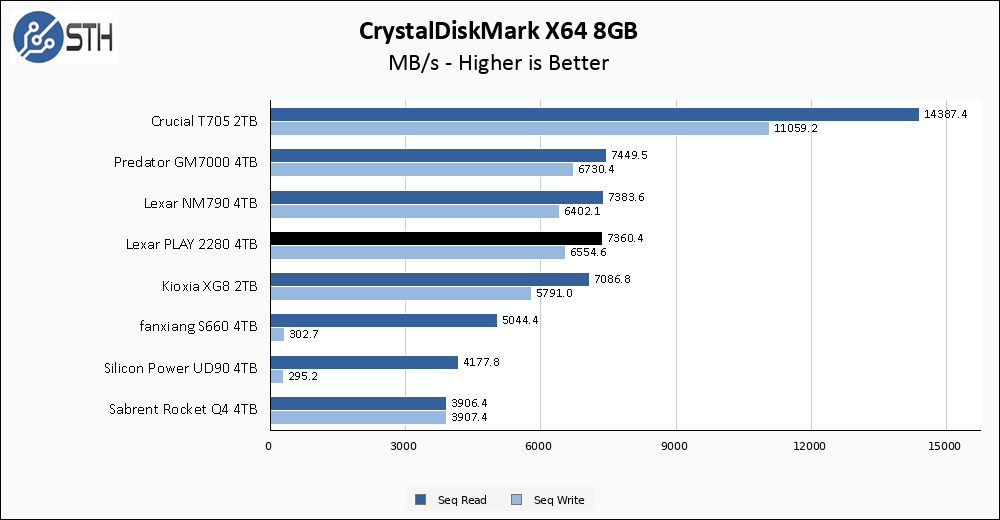
The PLAY 2280 improves slightly on the larger CrystalDiskMark test, and now I would say it is close enough to pass for hitting its rated performance. I do not have a lot of 4TB drives in my overall test set, but the PLAY 2280 is performing well next to everything I have to compare it against.
ATTO Disk Benchmark
The ATTO Disk Benchmark has been a staple of drive sequential performance testing for years. ATTO was tested at both 256MB and 8GB file sizes.
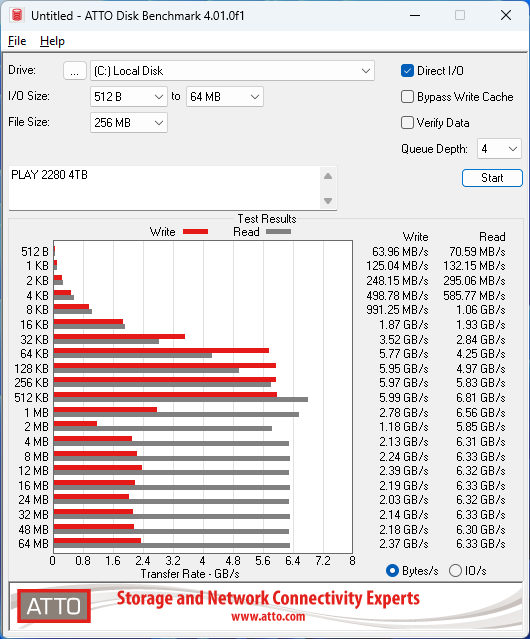
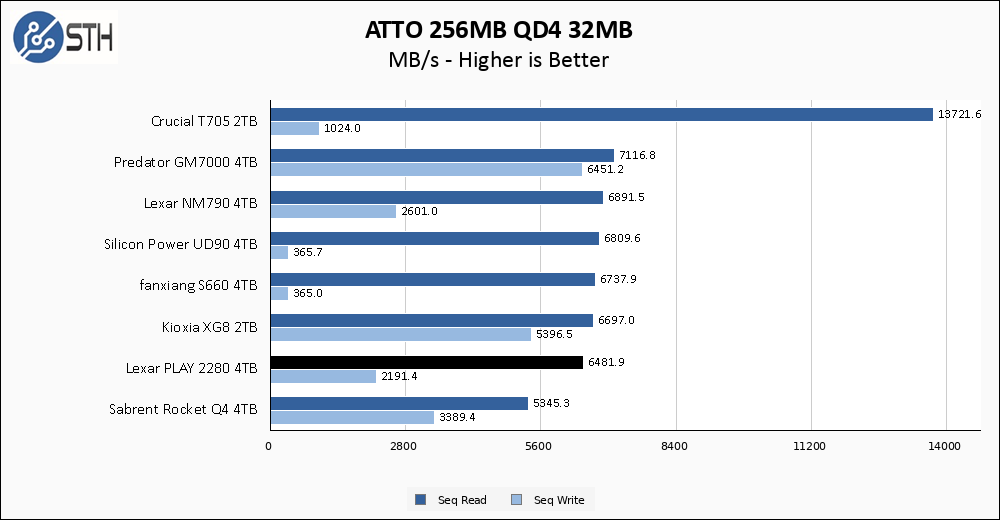
ATTO sequential results were not particularly impressive for the NM790, and I am seeing a repeat of that for the PLAY 2280. Less consistent and in general lower performance in ATTO is typical of DRAM-less drives, so it was expected for the PLAY 2280. Read performance is still fine, but the write pattern of ATTO testing is difficult for DRAM-less drives to cope with.
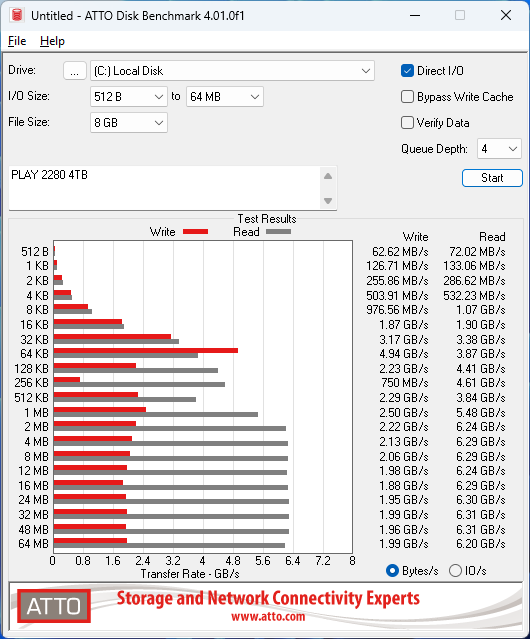
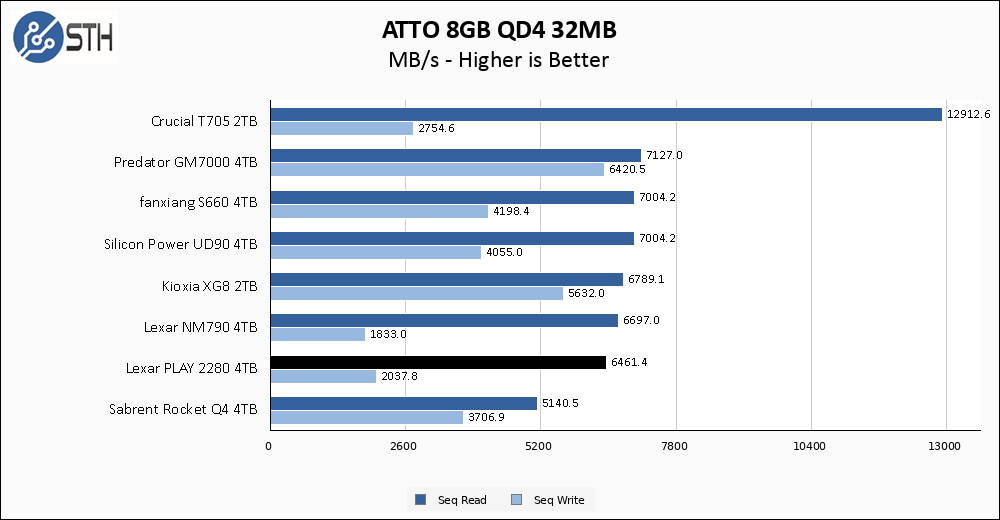
The larger ATTO test allows the PLAY 2280 to improve slightly over its NM790 predecessor, at least as far as write performance is concerned. Still, ATTO remains something warning flare for the potential pitfalls of a DRAM-less drive.
Anvil’s Storage Utilities
Anvil’s Storage Utilities is a comprehensive benchmark that gives us a very in-depth look at the performance of the drives tested. This benchmark was run with both a 1GB and 8GB test size.
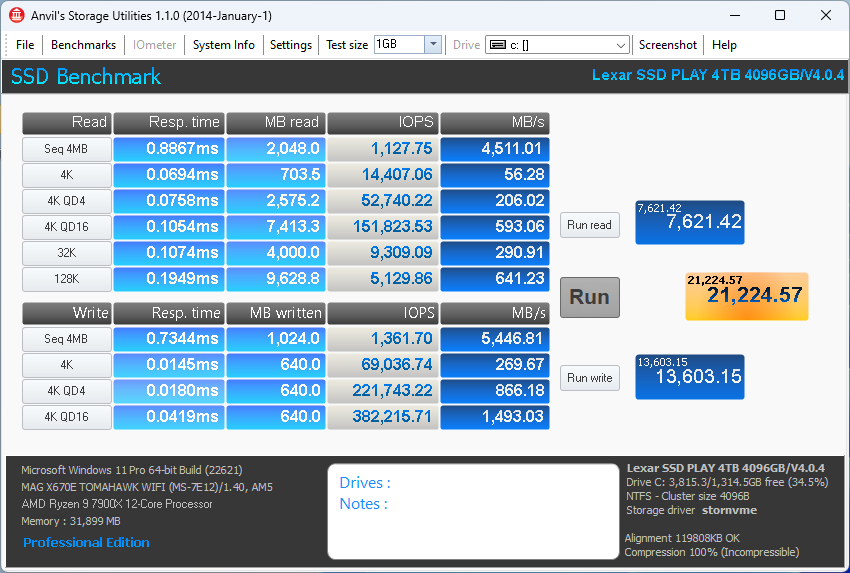
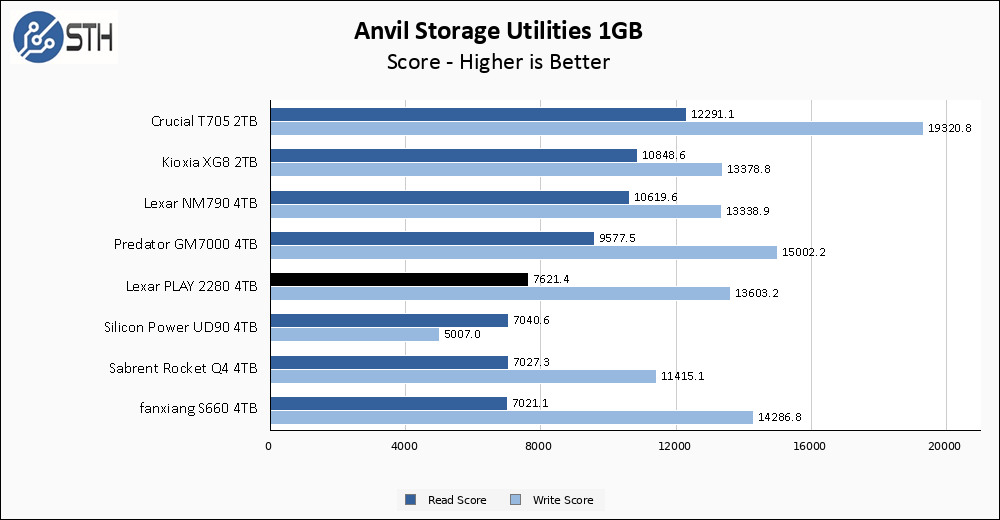
Anvil results for the Lexar PLAY 2280 4TB are the most divergent seen yet when comparing to the NM790. Unfortunately for the PLAY, the NM790 gets the better end of the deal here. TThe PLAY turns in significantly worse read results in trade for a very minor improvement in write performance. Compared to other drives on my chart, performance is middling overall, though the write score is certainly decent.
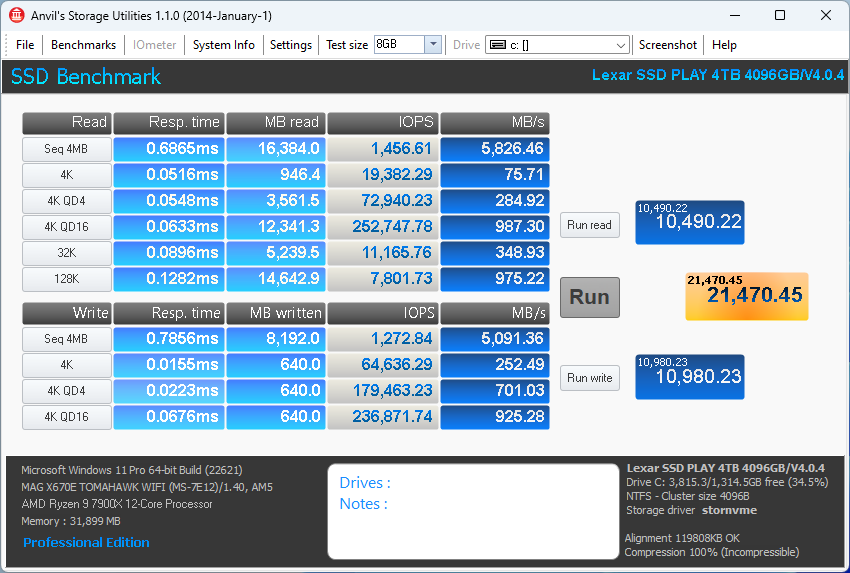
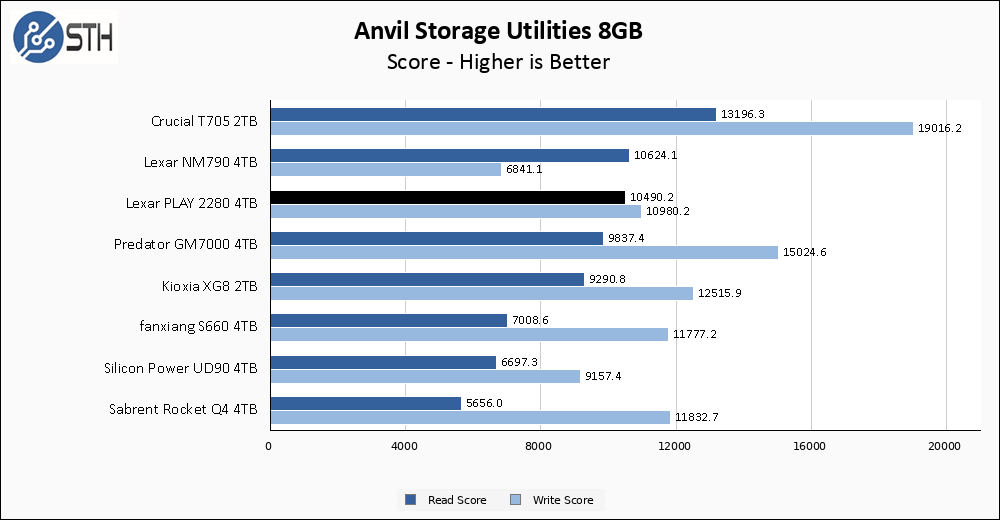
The Lexar PLAY 2280 recovers entirely in the larger Anvil score. Read performance has returned to parity with the NM790, but write performance holds much stronger. Good results all around for the PLAY 2280.
AS SSD Benchmark
AS SSD Benchmark is another good benchmark for testing SSDs. We run all three tests for our series. Like other utilities, it was run with both the default 1GB as well as a larger 10GB test set.
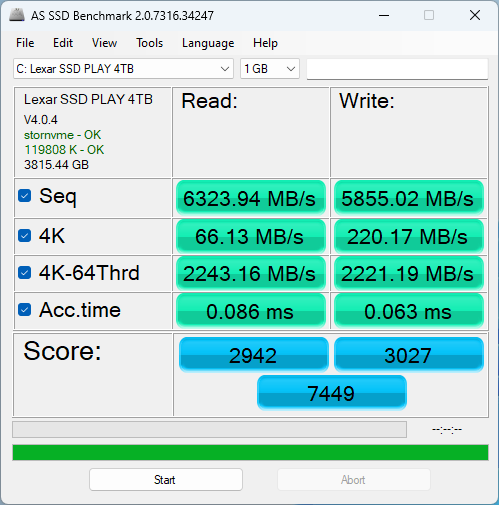
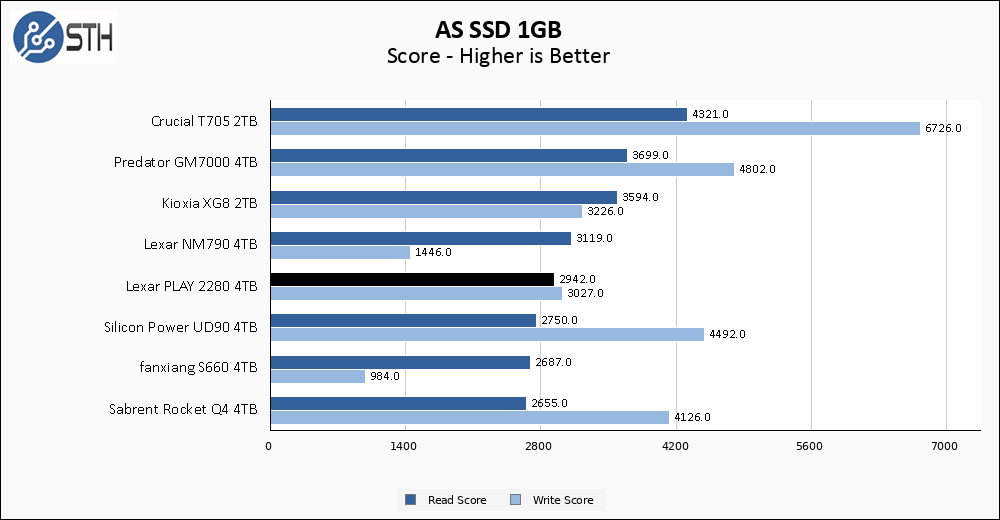
Performance in AS SSD continues a small trend of very similar read performance as compared to the NM790, but with improved write performance. The PLAY 2280 may be riding the middle of the pack, but on balance, it is an improvement over the NM790 which is nice to see.
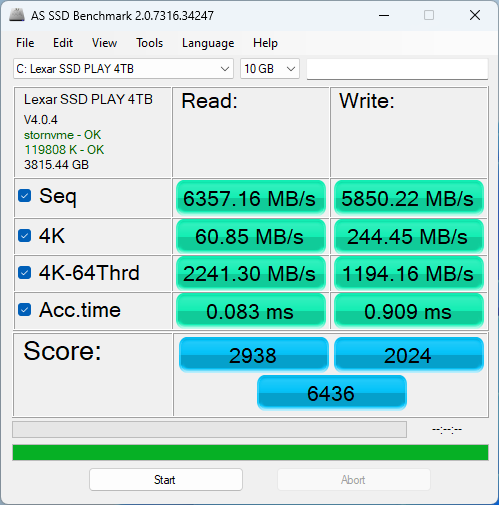
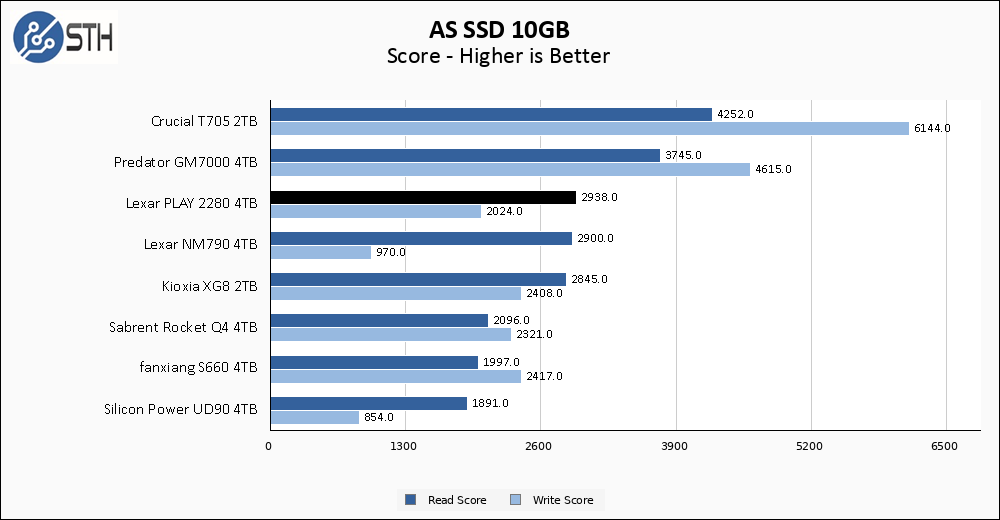
The pattern holds on the larger AS SSD test, with the PLAY 2280 now beating its predecessor by a small amount in read score and by a significant amount in writes.
SPECworkstation, thermals, and our conclusion are up next.


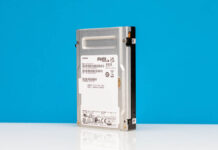
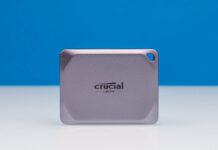
Really wish you’d add power usage to M.2 SSDs.